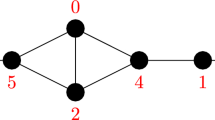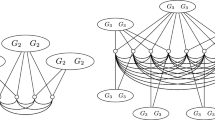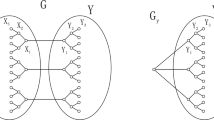Abstract
The no-three-in-line problem, introduced by Dudeney in 1917, asks for the maximum number of points in the n × n grid with no three points collinear. Erdos proved that the answer is Θ(n). We consider the analogous problem in three dimensions, and prove that the maximum number of points in the n × n × n grid with no three collinear is Θ(n2). This result is generalised by the notion of a 3D drawing of a graph. Here each vertex is represented by a distinct gridpoint in \({\Bbb Z}^3\), such that the line-segment representing each edge does not intersect any vertex, except for its own endpoints. Note that edges may cross. A 3D drawing of a complete graph Kn is nothing more than a set of n gridpoints with no three collinear. A slight generalisation of our first result is that the minimum volume for a 3D drawing of Kn is Θ(n3/2). This compares favourably with Θ(n3) when edges are not allowed to cross. Generalising the construction for Kn, we prove that every k-colourable graph on n vertices has a 3D drawing with \({\cal O}{n\sqrt{k}}\) volume, which is optimal for the k-partite Turan graph.
Similar content being viewed by others
Author information
Authors and Affiliations
Corresponding authors
Rights and permissions
About this article
Cite this article
Por, A., Wood, D. No-Three-in-Line-in-3D. Algorithmica 47, 481–488 (2007). https://doi.org/10.1007/s00453-006-0158-9
Received:
Published:
Issue Date:
DOI: https://doi.org/10.1007/s00453-006-0158-9




